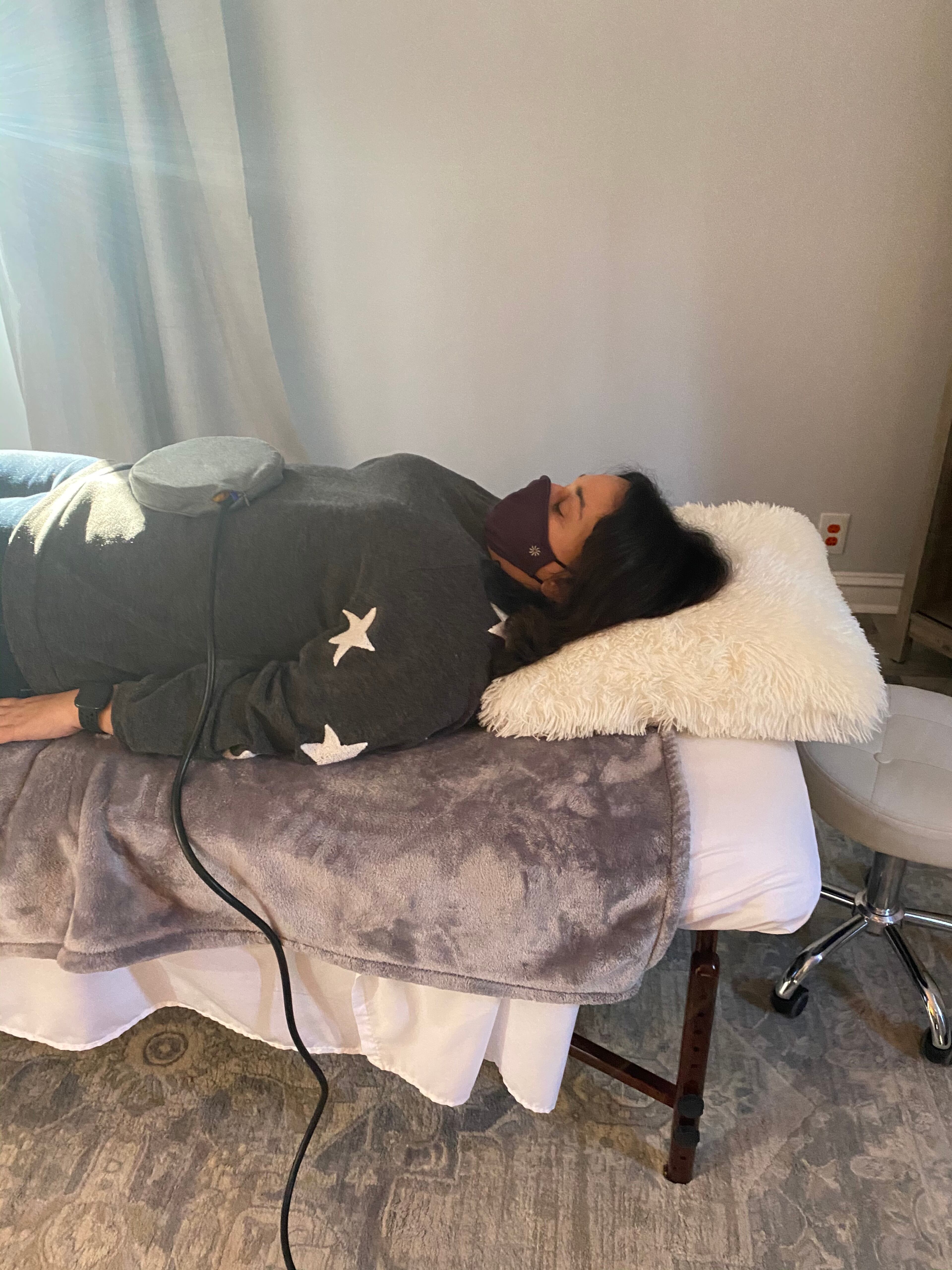COVID-19 patient describes hospital stay: ‘It was a war zone’

More than 50,000 people in Georgia have been hospitalized with COVID-19 over the course of the pandemic. Most of them likely never imagined themselves in that situation. Certainly, Susan Cohen Grunwald didn’t. The Alpharetta woman shares her frightening experience with COVID-19 and anxiety about the lingering effects. This piece has been edited for length and clarity.
I really don’t want to write this, to admit that I got COVID-19 or share my personal details. But I feel compelled to do so. Maybe I’ll save a life. Or some pain and suffering.
I got home today from a stay at Emory Johns Creek Hospital after a bout with the virus that caused double pneumonia. It was very serious and could have killed me.
I’m going to be OK. I’m lucky.
I’m not a health professional, but I learned a lot over the past four weeks.

I’m a very active, healthy 55-year old with no complicating health factors. Before the illness, I was working out almost seven days a week doing cardio classes, Pilates and walking. Two weeks before my diagnosis, had a great physical examination and with no issues.
I didn’t eat inside restaurants. I washed my hands and sanitized constantly. I masked up almost all the time. But almost isn’t good enough.
I took a risk and chose to work out without a mask with a friend inside her apartment for about 40 minutes. If only I could go back and make a different decision that day. Why didn’t I wear a darn mask?
My friend had no idea that she had been exposed to the coronavirus three days earlier. Hours after our workout, she got her first symptom and tested positive a few days later. She had a mild case and recovered within four or five days.
On my third day after exposure, I developed some very light symptoms and immediately quarantined.
Achiness, a low fever and a headche would follow. I took a PCR test on day five. I didn’t want do it too soon because that can lead to an inaccurate result. Eight days after exposure, I tested positive.
I had a fever for 11 days that got progressively worse — 102-103 at the highest. I had debilitating (10 on a scale of 10) back pain that was likely from the viral pneumonia that had set in.
I started having daily telehealth calls with my primary care physician. I monitored my oxygen daily with a finger oximeter that my doctor recommended that I purchase at a local drugstore. She told me to go to the ER if my oxygen got below 95.
On the 11th day, my oxygen dipped to the 80s, which scared the heck out of me. My husband — who also ended up getting COVID-19 but had a milder case — dropped me off at the ER entrance.
The ER was surprisingly not too busy when I arrived at 5 p.m on January 5. They immediately took blood, ordered labs and checked my vitals. They told me my blood was three times thicker than it was supposed to be and were extremely concerned that I might have a blood clot. (I didn’t even know at the time that COVID-19 greatly increases your risk of a blood clot.) They put me on supplemental oxygen to try to get the levels in my blood up.
My first two hours in the ER were a whirlwind with lab techs, doctors nurses and physician assistants constantly in and out of the examination room checking my vitals and taking specimens for lab tests.
At about 10 p.m., the doctor came into the room to give me some results. I didn’t have a blood clot. But they wanted to admit me to the hospital. My oxygen levels were low enough to qualify me for treatment with remdesivir, a drug given only when patients meet certain criteria. They immediately gave me injections of blood thinners to decrease my risk of blood clots. And they put me on a very high dose steroid, dexamethasone, given to reduce the inflammation in my lungs.
Although the ER happened to be at a lull at the hour when I arrived, that wouldn’t last. Emory Johns Creek continues to be near or at 100% capacity, just like every hospital in Greater Atlanta.
I was moved to a room in the ER that looked like a broom closet. Seriously. I was connected to an IV, so I couldn’t get out of bed. And there was no bathroom in my “closet.” I was not given a call button, so I had to yell to get a nurse’s attention and ask to go to the restroom.

Nine hours after I arrived in the ER, a nurse came to the room to unhook me from the IV, so I could walk to the bathroom. Don’t get me wrong – I’m not complaining about the medical staff at the hospital. They were absolutely doing the best they could with the capacity levels and short staff. They needed to spend their time with the sickest patients. I simply want to paint a picture for you of what it was like there.
I waited 24 hours until I was assigned a room. Actually, I was assigned a room a few different times, but then those rooms were reassigned to patients even sicker than me. And that’s fair.
At about 5 p.m, I was transferred to a room on a floor of all COVID-19 patients. I was so relieved to get into my private room with my own bathroom and a much quieter atmosphere – well, it started out that way.
My entire floor was full. Day after day, COVID-19 patients arrived in the ER, many of them because they hadn’t taken simple precautions like masking up and social distancing. Even though I had read so much about the virus, I still made the decision to work out without a mask on. What a stupid decision.
Most people who drive by Emory Johns Creek Hospital see a modern hospital that looks peaceful from the outside. They have no idea what’s actually happening inside. I certainly didn’t.
There were code blues in rooms all around me on my second afternoon in the hospital, people screaming for help. I’ll spare the gory details, but it was a war zone. Those doctors and nurses are doing the best they can.
After three very long days and nights in the hospital, my oxygen levels were back to near normal. I was so excited to leave that hospital. I know my stay was shorter than many people hospitalized for COVID-19, and I’m grateful for that. But it was three of the longest, scariest, loneliest days of my life.
I’m back to work almost full time, but mainly from home as I build up my stamina with a few hours a day in the office. I’m masking up 100% of the time now, social distancing and not taking any chances.
There are a few lingering effects. According to my Fitbit, my resting heart rate averaged 58 pre-COVID-19. Now, it averages 74. I’ve read a lot about it, and short -or long-term heart damage is a possibility. I’m praying it’s short term.
I’m having extreme insomnia. As you can imagine, this sleep deprivation has wreaked havoc on my emotions, ability to work and overall energy.

I definitely have more anxiety than before I was sick. I’ve decided to go see a therapist to talk through all of this and get some professional help recovering mentally.
If you test positive, no matter how young and healthy you may be, consult with a doctor. You don’t know how your body will be affected by COVID-19. It’s critical that you are under the care of a doctor during this mysterious illness. Don’t try to Google your way through it.
I thought I was stronger than COVID-19. I wasn’t. Don’t let your guard down. Be smarter than me.

